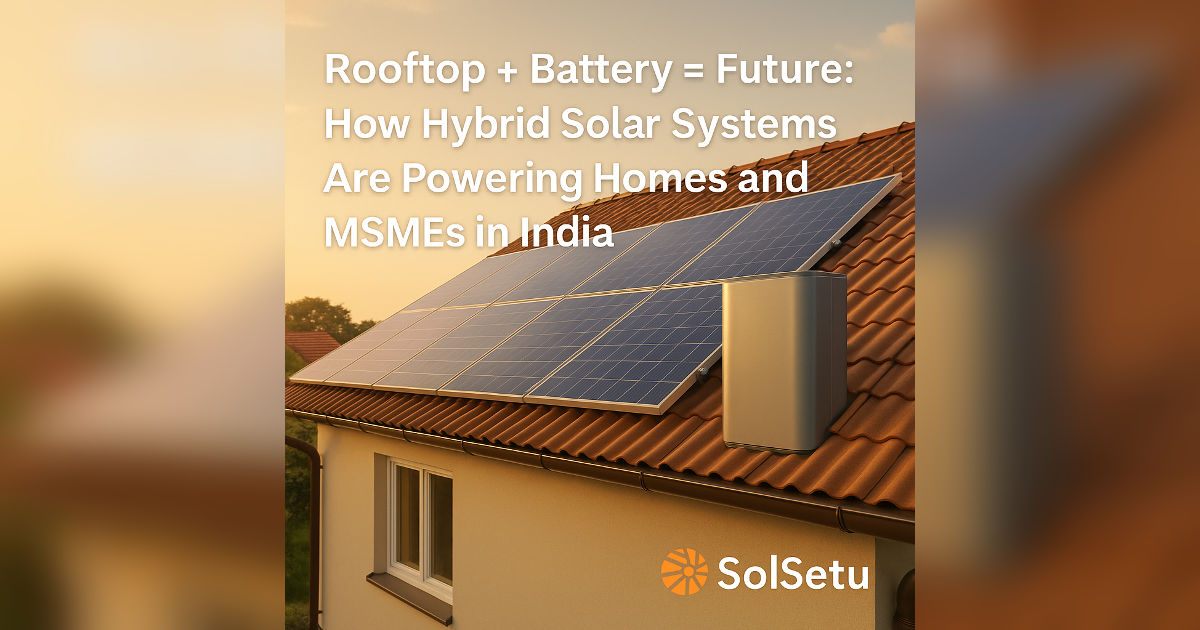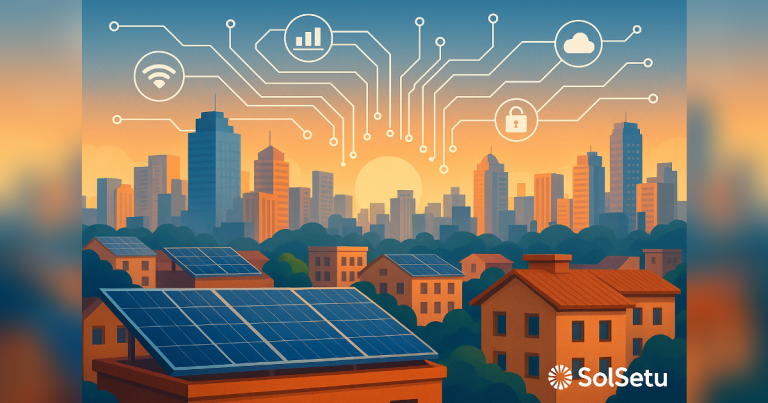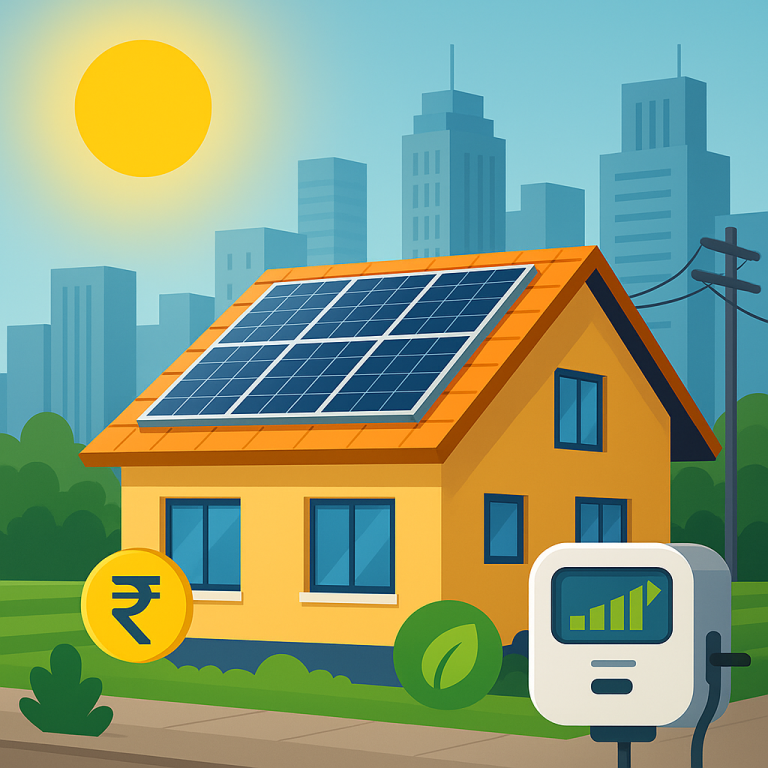Rooftop + Battery = Future: How Hybrid Solar Systems Are Powering Homes and MSMEs in India
Rooftop + Battery = Future: How Hybrid Solar Systems Are Powering Homes and MSMEs in India
By SolSetu News Desk | Published on October 19, 2025

New Delhi, October 19 ( SolSetu News ) — As India’s renewable transformation accelerates, homeowners and small enterprises are increasingly choosing hybrid solar systems — solar + battery combinations that ensure power independence, lower bills, and greater grid reliability.
🔋 Why Hybrid Systems Are the Next Step
Hybrid setups combine rooftop solar panels with energy-storage batteries (usually lithium-ion or LFP). These systems store excess power produced during the day and discharge it at night or during outages, ensuring a consistent electricity supply even in areas with weak grids.
According to data from India’s MNRE, hybrid and storage-based systems saw a 43 % growth YoY in 2025, with Tier-2 cities like Surat, Indore and Nagpur leading the adoption curve.
🏠 Empowering Homes & MSMEs
For homeowners, hybrid solar systems are increasingly affordable thanks to falling battery prices (–22 % in two years) and financing under the PM Surya Ghar Yojana. For MSMEs, the ability to run critical equipment during power cuts has made hybrid systems a strategic asset rather than a luxury.
💡 New Technologies Driving Efficiency
Advanced energy-management systems (AEMS) and AI-based smart inverters are helping users optimize battery charge/discharge cycles and track savings in real time. Companies such as Tata Power Solar, Luminous, and Waaree have introduced new hybrid models that can switch seamlessly between solar, battery and grid modes.
⚙️ Government Support & Policy Momentum
Under the National Energy Storage Mission ( NESM ), India aims to develop a minimum of 50 GWh of battery manufacturing capacity by 2030. Meanwhile, DISCOMs in Maharashtra and Goa are piloting net billing models that reward users for both exporting and storing solar power.
🌞 A Sustainable Future for Urban & Rural India
Experts say hybrid systems could reduce grid stress and carbon footprint significantly. With better incentives and public awareness, hybrid solar may soon become India’s default model for residential and commercial rooftops — an essential step toward the nation’s net-zero 2050 vision.






